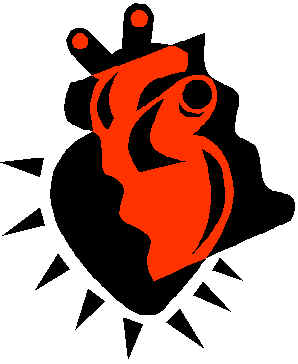Team EMS
Operations
Clinical
Education
EMS-Rescue
Dispatch
|
|
|
|
| |
| Please select the most appropriate
answer for each of the following examination questions. |
| Multiple Choice - |
| |
- Which chamber of the heart pumps blood to the lungs?
- left atrium
- right atrium
- left ventricle
- right ventricle
- all of the above
- Blood is supplied to the heart muscle by the:
- superior vena cava
- coronary arteries
- internal carotid arteries
- external carotid arteries
- inferior vena cava
- Which of the following statements does not describe pulmonary circulation?
- During pulmonary circulation deoxygenated blood becomes oxygenated.
- Pulmonary circulation begins as blood leaves the right ventricle and enters the
pulmonary artery.
- Pulmonary circulation ends as blood returns through the pulmonary veins to the left
atrium.
- Pulmonary circulation begins when oxygenated blood leaves the left ventricle.
- The pulmonic valve prevents regurgitation from the pulmonary artery to the right
ventricle.
- Which of the following substances are not normally carried by the circulatory system?
- Oxygen
- Carbon monoxide
- Hormones
- White blood cells
- The muscular layer of the wall of the heart is called the:
- Endocardium
- Pericardium
- Myocardium
- Adventitia
- Serosa
- The exchange of gases occurs in which component of the vascular system?
- venules
- capillaries
- veins
- arterioles
- lymphatics
- The conducting system throughout the ventricles is called the:
- Purkinje system
- Sino-atrial node
- Bundle of His
- Atrioventricular node
- Parasympathetic nervous system
|
| True - False |
| |
- In most individuals the cardiac output changes with the cardiac rate.
- A cardiac rate in excess of 100/minute is referred to as a bradycardia.
- The pulmonary artery carries deoxygenated blood.
- Valves exist in the veins of the lower extremities.
- The valve between the left atrium and left ventricle is the tricuspid valve.
- The normal pacemaker of the heart is the sinoatrial node.
- The inner lining of the heart wall is called the endocardium.
- Peripheral vascular resistance plays little or no role in the determination and
maintenance of blood pressure.
- Cardiac output can be calculated by multiplying the heart rate by the stroke volume.
- Ventricular systole is associated with relaxation and decreased intra-ventricular
pressure.
- Veins have a greater capacity to dilate than do arteries.
- The Frank-Starling principle relates to the relationship of heart muscle stretching to
cardiac output.
- An increased preload can cause cardiac muscle fibers to stretch.
- Myocardial contractility is depressed by sympathetic nervous system stimulation.
- Afterload is the pressure that the ventricles must work against to pump blood into the
aorta and pulmonary artery.
|
|
|

education
Anatomy & Physiology of the Heart
About the
Instructor
Course
Objectives
Overview of the
Cardiovacular System
The Cardiac Cycle
Hemodynamics of
the Cardiac System
The Vascular System
References
Course Exam |
